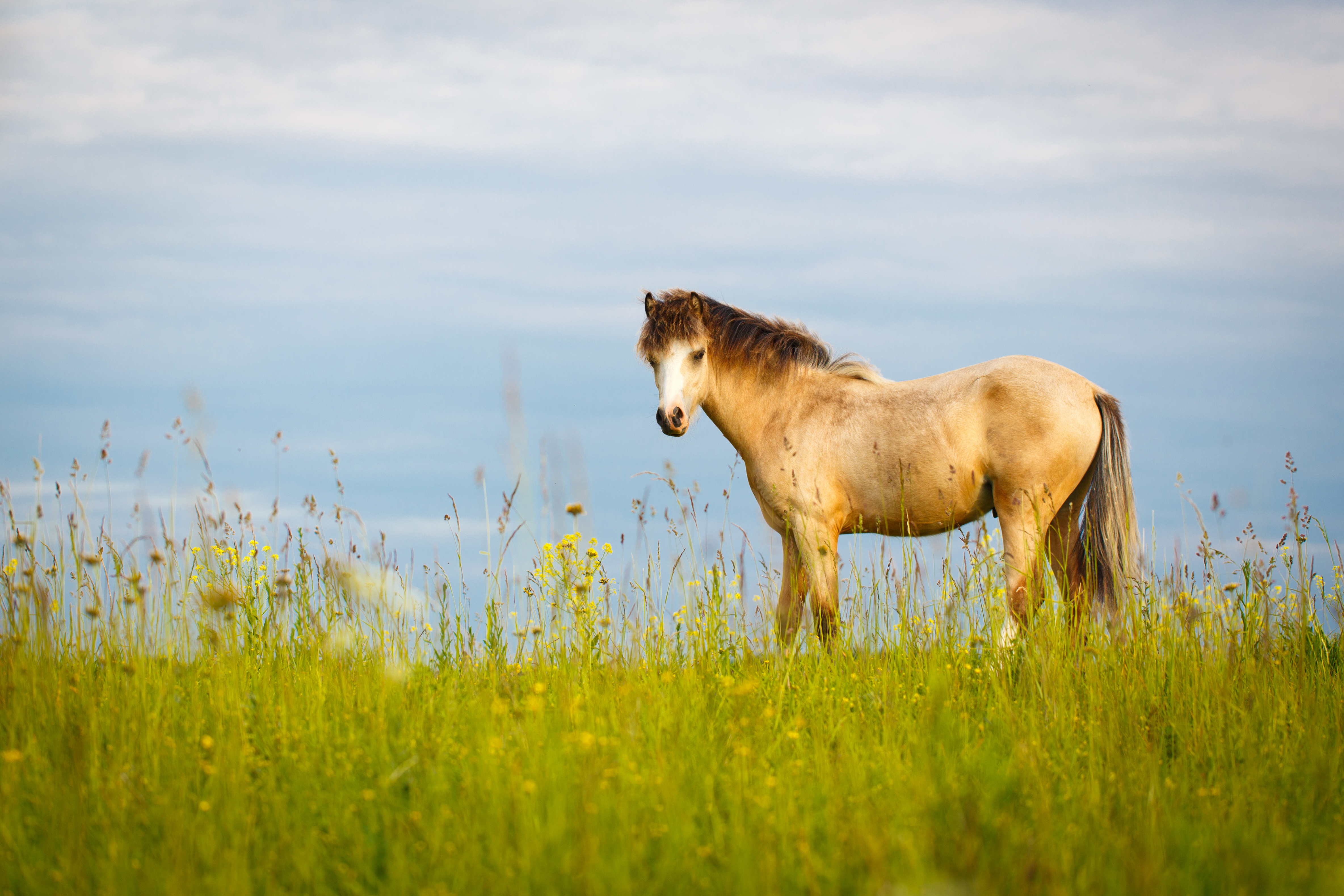Equine Cushing’s disease, or more specifically known as Pituitary Pars Intermedia Dysfunction (PPID), is an endocrine disorder that involves the pituitary gland at the base of the brain which produces hormones in response to brain signals. PPID is most commonly diagnosed in older horses, with the average age being 19, however, it has been documented in horses as young as 10.
Signs of PPID include
- Failure or delayed shedding of a winter coat
- Unusual long, wavy or curly coats
- Increased water intake and thus increased urination.
- Abnormal fat distribution, typically on the neck, base of tail and around the eyes.
- Loss of muscle tone
- Recurrent laminitis
Dietary Management
The key factor to remember when choosing a diet for horses suffering with PPID is the increased risk of laminitis due to hormone imbalances. Though this may be reduced in horses being treated with medication, it should always be considered when choosing an appropriate diet plan, whether this is for weight gain or weight loss. Horses with PPID have difficulty maintaining normal blood glucose levels due to insulin sensitivity, feeding a diet low in nonstructural carbohydrates (NSC) can improve insulin sensitivity and reduce the risk of laminitis in affected horses. Aim for a feed that has less than 10% combined starch and sugar (always consider the amount you are feeding, and relative starch and sugar intake per meal as this is often more relevant), and forage that has less than 10% water-soluble carbohydrates (WSC). The WSC in forage can be confirmed by sending a sample in to be analyzed at the lab. Soaking your hay has been shown to reduce WSC in forage, the latest research recommends that soaking hay for approximately 60 minutes in cold water is adequate.
If your PPID horse is underweight and requires a higher calorie diet to help build or maintain condition, provide a feed high in fibre and oil, and low in starch and sugar. Also look for feeds containing additional nutrients to support digestive health and immunity as these are particularly beneficial for those with PPID. As an alternative to higher calorie feeds, a good quality balancer can be fed to provide the proteins, vitamins and minerals, combined with feeding a high oil supplemental feed, and/or digestible fibre sources. Adding in a chaff is also beneficial as it encourages chewing and slows down eating rate, which means the feed is consumed much slower thus limiting peaks and troughs in blood glucose levels.
If your PPID horse is a “good-doer” and you are trying to encourage weight loss it is still important that they receive a fully balanced diet. To keep calories, starches and sugars minimal provide a vitamin and mineral supplement or balancer with low-calorie chaff.


